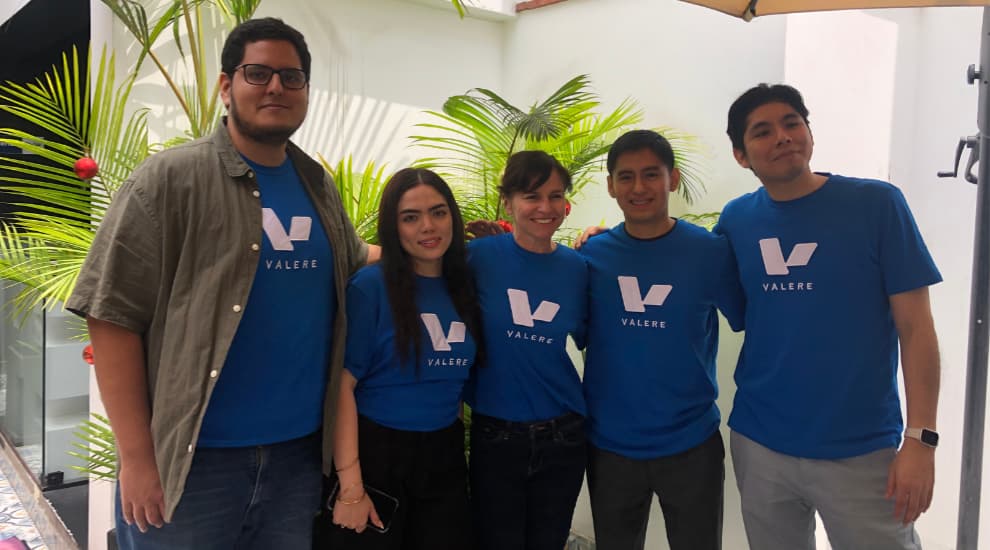As the demand for generative AI (GenAI) continues to rise, organizations are keen to leverage its potential for innovation and efficiency. In this blog, Valere’s AWS ML team shares insights from over 8 months of experience, addressing the top challenges encountered in delivering GenAI solutions. We cover topics like Reinforcement Learning with Human Feedback (RLHF), transitioning from Proof of Concept (POC) to production, data integration methods, and choosing the right Large Language Models (LLMs). Whether you’re exploring cost-effective GenAI solutions or managing multiple models, these insights and best practices will guide your next steps in the world of generative AI.

On this page
A common query we received was about RLHF. Simply put, RLHF stands for reinforcement learning from human feedback. This technique is crucial for refining AI models by incorporating human inputs to improve their decision-making capabilities.
Many customers are eager to jump straight from a POC to production. While this is feasible, our ML experts suggest an intermediate step—developing a functioning GenAI application that isn't fully production-ready. This approach allows for user testing and feedback, which is vital for refining the model. An MVP (Minimum Viable Product) focuses on scaling from the POC, integrating the model with existing workflows, and adding essential features like automated tests and security measures.
When integrating data from external systems, it's essential to understand the difference between Retrieval-Augmented Generation (RAG) and vector databases. RAG is an architecture for LLM systems and often relies on vector databases, but they are not the same thing. Choosing the right method depends on your specific use case and the data requirements.
The distinction between POCs and production models is crucial. A POC aims to validate feasibility quickly, using tools like Bedrock to streamline the process. On the other hand, production models require thorough considerations of cost, latency, and optimization, often utilizing AWS SageMaker for hosting and scaling.
Selecting the right deployment model for your Large Language Models (LLMs) involves evaluating team capabilities and cost implications. Cloud-based solutions offer scalability and lower latency, while locally managed LLMs can provide cost benefits if your team has the necessary skills and consistent traffic patterns.
Cost considerations for GenAI solutions revolve around four factors: model selection, input/output requirements, context storage needs, and model size. Opt for use cases that yield measurable financial impacts, such as improving user retention or operational efficiency.
For tasks requiring multiple models, using the simplest effective model for each task is advisable. This approach minimizes costs and development time, though a more powerful, unified model can be considered for faster market entry.
Effective monitoring of GenAI artifacts involves traditional ML project metrics, logging, and user feedback. Techniques like LLMOps and extensive logging of intermediate steps and failure cases help ensure performance and repeatability.
Service Level Agreements (SLAs) for GenAI should account for output structure, latency, and task complexity. Prompt engineering techniques can enhance output reliability, and performance metrics should be tailored to specific use cases.
Valere's team frequently uses LangChain and similar libraries for faster development and access to cutting-edge techniques. These tools help adhere to best practices and streamline the development process.
The decision to build internally or use external solutions depends on the centrality of the feature to your business and your team's capabilities. Internal development can offer significant benefits but requires a long-term commitment and resource investment.
Choosing the best LLM involves testing performance on public leaderboards, starting with smaller models, and considering factors like open vs. closed-source models and fine-tuning needs. Practical testing for your specific tasks remains the best approach.
Valere has a proven track record of helping clients with AI/ML migrations and optimizations. For detailed case studies and success stories, visit Valere.io/work or reach out for personalized insights.
AI project costs encompass data collection, model development, and deployment. Mid-sized projects require robust data infrastructure and model training investments. Valere offers streamlined processes to manage these costs effectively.
For those interested in learning more about AI and AWS services, explore resources at Valere.io/aws/genai and aws.com. Our team is always ready to provide personalized guidance and support.
Navigating the complexities of generative AI requires a strategic approach and informed decision-making. At Valere, we are committed to helping you overcome these challenges and harness the full potential of GenAI. For more insights and support, feel free to contact us or explore our resources.

Share